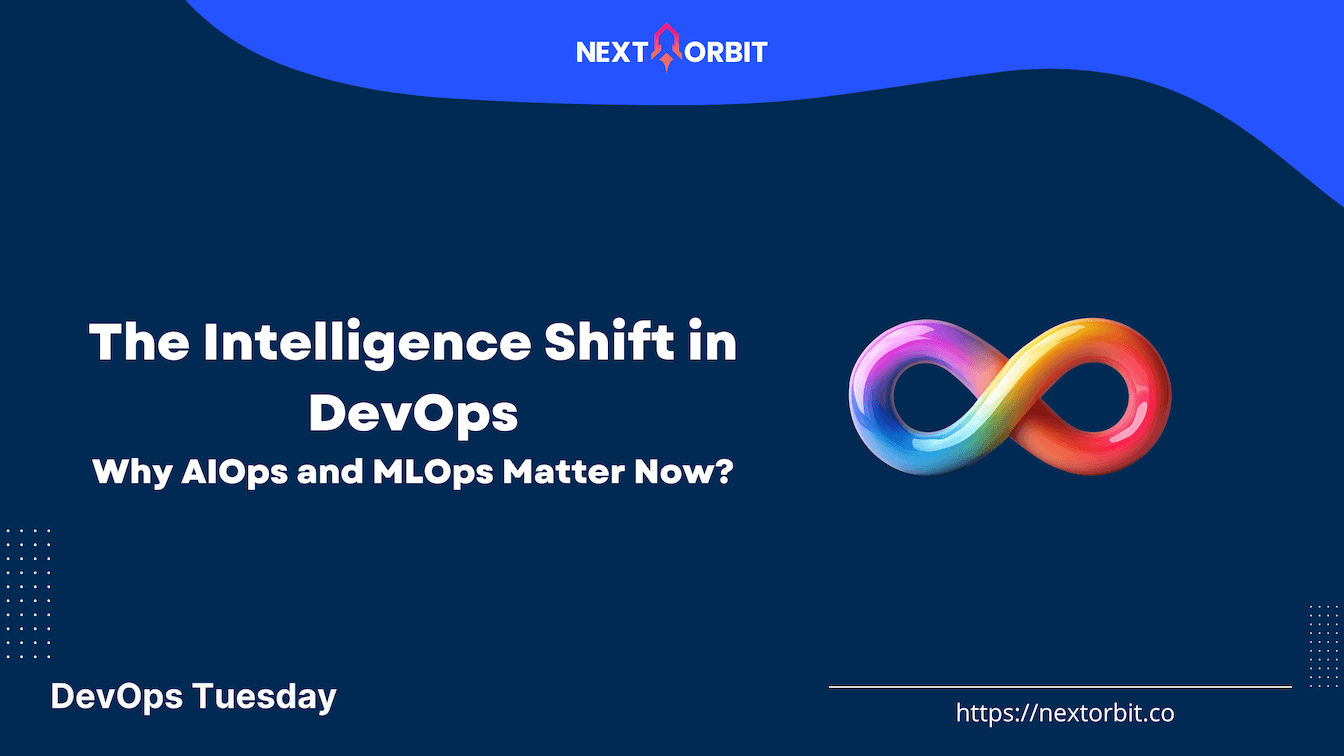Why AIOps and MLOps Matter Now?
Talk to any DevOps engineer about their typical day, and you’ll hear a familiar story. Hours spent reading dashboards. Endless alert triage. Digging through logs to find the one needle in a haystack of noise. It’s not that the work is unimportant; it’s that it doesn’t move the needle.
The irony is thick. We built DevOps to make software delivery faster and more reliable. And it worked. But success brought scale, and scale brought complexity. Microservices, multi-cloud architectures, and thousands of interdependencies. The systems we created to solve problems have become problems in their own right.
Now imagine something different. You start your morning, and instead of confronting a wall of red alerts, you ask a simple question:
“What’s happening with the checkout service?”
And you get an answer that actually understands context: “Latency increased 23% in the last hour due to database connection pool exhaustion. I’ve already scaled the pool and the issue is resolving. Want me to walk you through the root cause?”
This isn’t speculation. It’s already emerging in leading enterprise toolchains. And it represents a fundamental shift in how we think about operations – one that matters to everyone from the engineer in the trenches to the executives watching quarterly numbers.
Two Paths to the Same Destination
The complexity problem has spawned two complementary approaches, both powered by intelligence rather than just automation:
AIOps (AI for IT Operations) transforms how humans interact with infrastructure. Instead of reading raw metrics, you work with a system that understands context, predicts problems before they cascade, and can even execute solutions autonomously when appropriate. Think of it as moving from reading instrument panels to having an expert co-pilot.
MLOps (DevOps for Machine Learning) tackles a different problem: ensuring that AI models powering your business, such as fraud detection, personalization, and search ranking, don’t quietly degrade into uselessness. The goal here is to make AI reliable and deployable at scale, with the same rigor we apply to traditional software.
Here’s what connects them: AIOps makes your operations intelligent. MLOps makes your intelligence operational. You need both because they create a reinforcement loop that neither can achieve on its own.
Beyond Smarter Alerts
The first generation of AIOps focused heavily on alert reduction, using machine learning to filter noise and prioritize what matters. Valuable, certainly. But limiting.
The real shift happens when AI becomes a genuine collaborator in operations, not just a better filter.
The View from Different Altitudes
The value proposition looks different depending on where you sit:
For engineers, it’s about reclaiming time and attention. Instead of spending your day as a human correlation engine, you focus on building resilient architectures and solving novel problems. The grind of alert fatigue and toil diminishes. The interesting work expands.
For product teams, it’s about the reliability of the AI features that drive revenue. Consider a healthcare organization using ML models for patient risk stratification. If the model silently degrades due to changing patient demographics or treatment protocols, care quality suffers for months before anyone notices. MLOps catches this early, ensuring your intelligent systems continue serving their mission-critical purpose.
For executives, it’s about sustainable velocity. Companies with mature AIOps and MLOps practices ship faster because they’re not perpetually firefighting. They scale without proportionally scaling headcount. They turn reliability from a cost center into a competitive advantage.
But there’s a compounding effect that’s easy to miss: better operations enable more stable deployments. Stable deployments enable faster iteration. Faster iteration enables better products. Better products drive growth. Growth creates complexity. And AIOps plus MLOps are what keep that flywheel spinning instead of seizing up.
The Reinforcement Loop
Here’s where things get interesting. AIOps and MLOps aren’t parallel tracks-they create a feedback loop that makes each more powerful:
Your AIOps system detects latency creeping up in your recommendation service. It traces the issue to model performance degradation. That insight automatically triggers your MLOps pipeline to analyze for data drift, retrain the model, and deploy a new version, while AIOps monitors the rollout to ensure it actually solves the problem.
Meanwhile, operational data from infrastructure feeds back into better anomaly detection models, improved capacity planning, and more accurate predictions.
It’s operations that learn. Infrastructure that adapts. Systems that genuinely improve themselves over time.
What This Means?
If you’re running operations today without intelligent assistance, you’re trying to conduct an orchestra by listening to every instrument simultaneously, all the time. It’s cognitively impossible, and the strain shows in burnout, incidents, and missed opportunities.
The path forward is clear: treat intelligence as infrastructure-baked in, not bolted on. When you do:
- End users experience fewer outages and consistently faster services
- Engineers spend time building instead of firefighting
- Teams scale their impact without scaling their headcount proportionally
- Reliability becomes predictable rather than perpetually precarious
At Next Orbit, we help teams build operations that scale through intelligence, not just effort. Follow us for insights on building sustainable, high-performing systems.

